During the repair process in the house, when choosing finishing options, the question often arises for the owners how to arrange the ceiling. If painting was chosen from all possible methods, then the next step is the choice of material. Most often, latex paint for ceilings is used for these purposes. It is important to choose it in such a way that the resulting coating fully meets all the requirements of homeowners.
- Operating principle
- Main advantages and disadvantages
- Main varieties
- Paint selection
- Stain preparation
- Painting procedure
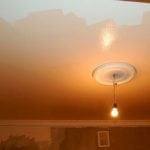
Operating principle
Latex paint is a water-dispersion composition. That is, it includes not only the coloring pigment and binding polymers, but also water, in this situation playing the role of a solvent. It does not allow particles to adhere to each other while the substance is in a liquid state. After application, water begins to gradually evaporate, as a result of which the polymers form a stable, durable film on the surface.
to contents ↑Main advantages and disadvantages
Latex paint has many advantages:
- After painting and complete drying, the surface is notable for considerable moisture resistance. This is very convenient: in case of pollution, in most cases they can be easily cleaned without fear of breaking the coating. It is important not to use harsh abrasives and corrosive chemicals for these purposes. In rooms where the ceiling will inevitably get dirty, for example, in the kitchen, it is better to replace the latex paint with silicone or silicate.
- Coating with this type of finishing material has vapor and waterproofing properties.
- The composition is very convenient to use. The drying time of one layer ranges from thirty minutes to two hours, depending on the humidity in the room and the thickness of the application. In addition, the substance does not have a characteristic odor, which is also very practical.
- The paint has high elasticity, thanks to this property you can not worry about the fact that over time the ceiling will become covered with cracks.
- Another important advantage of the coating is its ability to pass air. This means that the painted surface will “breathe” and unaesthetic bubbles will not form on it.
In addition to these advantages, latex paints have some disadvantages:
- The increased elasticity of the composition leads to the fact that after painting on the ceiling, all irregularities, roughness and other flaws will be clearly visible. To avoid this, it is necessary to smooth and grind the surface thoroughly before application.
- Latex does not tolerate hypothermia. It is possible to use substances based on it only in rooms that are well heated. Otherwise, the coating will not adhere to the ceiling.
- Paints and varnishes of this type are very susceptible to mold, fungus and bacteria. Therefore, before proceeding with their application, it is necessary to treat the surface with a special antiseptic, and subsequently sanitize the room.
- The disadvantages include the low fire resistance of the composition.
Main varieties
Modern latex paints are divided into several types:
- acrylic;
- acrylic butadiene-styrene;
- acrylic polyvinyl acetate;
- acrylic silicone.
For internal and external works, various types of coating are used.The composition of the paint used in the processing of building facades includes special substances that provide protection against the formation of mold.
Paints and varnishes, which are intended for decoration, are divided into acrylic, vinyl, textured, dense and drip-free.
Dense and vinyl varieties are best suited for painting the ceiling. Textured formulations help create an interesting embossed design, usually used when painting walls.
The simplest and most affordable option for latex paint is polyvinyl acetate, to put it more simply - a water emulsion that provides a matte surface. Due to the high adhesion of the substance, the resulting coating is durable. In addition, the composition dries rapidly and has almost no smell, it is easily washed by hand.
The disadvantage is its ability to wash off even after complete drying of all layers. But for painting the ceiling, this is not of particular importance. This option is not applicable for the decoration of a country house, since with decreasing temperature its resistance is significantly reduced.
to contents ↑Paint selection
To choose the perfect latex paint for decorating the ceiling, you need to decide not only on its shade. An important parameter is the degree of gloss, which is divided into 6 categories. The smaller the number that characterizes the gloss, the more the matte surface will be after drying.
A composition that provides an almost mirror finish is rarely chosen, especially for walls. The most popular is moderately matte paint.
It is also necessary to take into account parameters such as moisture and wear resistance. You can judge them by using the indicator of abrasion cycles, which is indicated on each package. The higher the number, the more resistant the finish will be. Sometimes this characteristic is indicated in classes, of which the first class is the highest quality.
It is worth paying attention to two more parameters:
- Hiding power means how much material will be needed to fully stain without translucent patches.
- Thixotropy characterizes the speed of thickening of the paint after it is applied to the surface. Based on this indicator, we can conclude how high the risk of sagging is. With low thixotropy, there is the possibility of stains during staining.
Stain preparation
Most often, paints containing latex are used in rooms with high humidity. Because of this, the foundation must be prepared with particular care. The following steps should be taken:
- remove existing trim;
- check the integrity of the plaster;
- if necessary, plaster the ceiling;
- align and finish grout;
- sanded surface;
- apply a primer.
Painting procedure
The staining technology is quite simple and does not require any special skills. The process consists of several stages:
- If a primer has not been used, the first coat is applied with diluted paint. The solvent may be either a special composition or plain water.
- The layer is applied using a roller. For convenience, you can first paint the edges with a brush - so the paint will not get on the walls.
- The ceiling is left to dry completely.
- The next layer is done without dilution. To do this, you can use both a brush and a roller, and a spray. If you mix a little linseed oil in the composition, then it will go to bed much more evenly.
- Final drying should be done without drafts.
Proper selection and compliance with all the rules is the key to a successful repair. Following the described tips, ceiling decoration can be done without much difficulty.

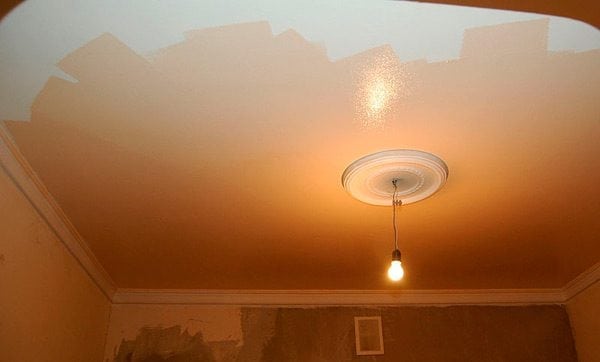
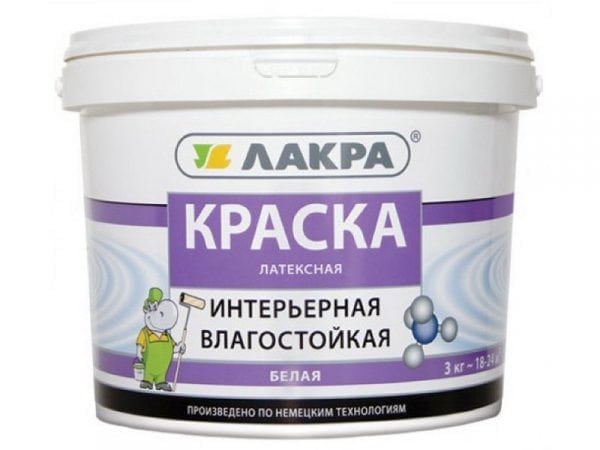
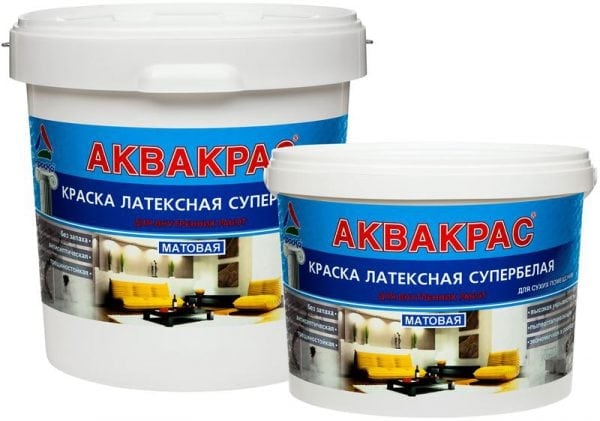
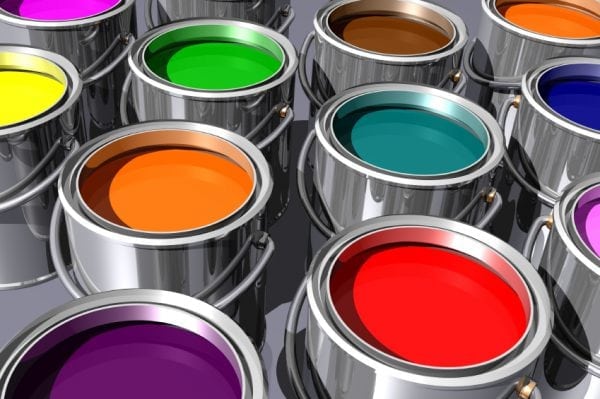




Good afternoon, please specify if the first coat of paint for the ceiling was matte, but still then I wanted a glossy finish, is there a glossy latex paint?